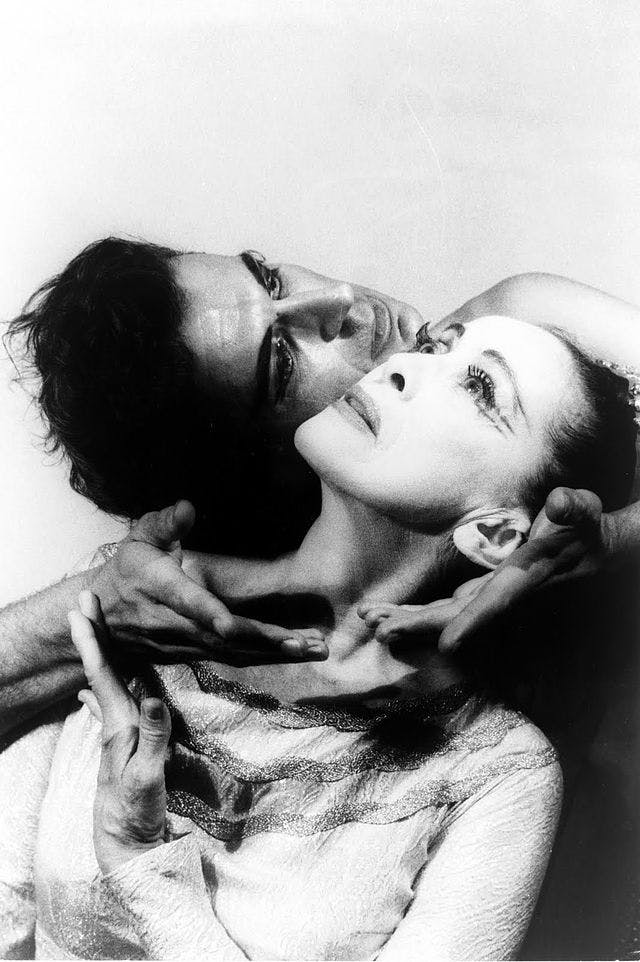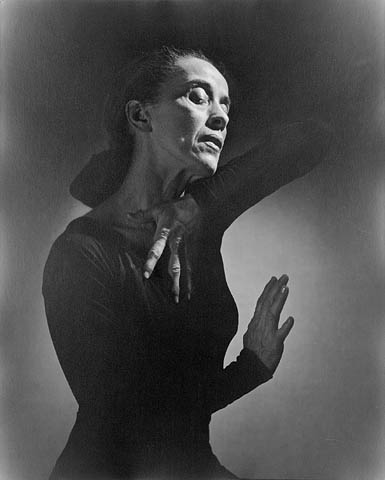Martha Graham: The Goddess of Dance
Jowett’s biography is well-formed and expert, but Baldwin’s quest to absorb how Graham ‘invented, defined, sustained, shaped, and reshaped her dynamic movement style and breathing technique’ is more gripping.

‘Martha Graham: When Dance Became Modern’
By Neil Baldwin
Knopf, 576 pages
‘Errand into the Maze: The Life and Works of Martha Graham’
By Deborah Jowitt
Farrar, Straus and Giroux, 480 pages
In 1992, while interviewing choreographer Agnes de Mille for my biography of Rebecca West, we digressed to discuss the publication of her recent biography of a friend, Martha Graham. De Mille looked at me, amused and devilish, and said: “I waited until she died. That was sneaky of me, wasn’t it?” We laughed, conspirators in the suspect art of biography. At several strategic points, Deborah Jowitt begins sentences: “According to Agnes de Mille, …”
In her preface, Ms. Jowitt explains that Graham was “next” for her after having done a biography of choreographer Jerome Robbins, but why, exactly, a new biography of Graham is needed is never clarified. Instead, Ms. Jowitt touts her work as a dancer, choreographer, and writer, saying it gives her “one foot up the ladder”; also she recounts having “taken morning classes at the Martha Graham Studio, seen many of her dances, and written about them.” Graham had even “nodded briefly” to her.
From there, we get the gratitude list that biographers often parade to show how many interviews and archives have gone into the work. For the nitty gritty, though, Miss Jowitt cannot do without de Mille, who describes her “old friend” in the late 1960s and early 1970s appearing like “a little oriental deity, a little goddess, an empress, like a manicured Japanese doll. She was tiny and costly, rare and superb. And very remote. How unlike the plain girl we used to know, with the thunder in her head!”
It is very difficult to surpass Agnes de Mille as a witness who writes so splendidly. So Neil Baldwin takes a different tack, beginning his biography with Martha Graham having an epiphany: “Bodies never lie,” she told de Mille. I immediately thought of another Graham biography, “Martha Graham: A Dancer’s Life,” by the late Russell Freedman; it’s supposedly for 10- to 12-year-olds, but is really the work of a master biographer to be read by those of all ages.
The first two paragraphs of Freedman’s first chapter come as close as anything I’ve read to evoking what Martha Graham was about:
“As an ambitious young woman who wanted to create a new kind of dance, Martha Graham spent many hours at New York City’s Central Park Zoo. She would sit on a bench across from a lion in its cage and watch the animal pace back and forth, from one side of the cage to the other.
“She was fascinated by the elemental power of the lion’s great padding steps, by the purity of its movements. Again and again, it took four steps across the cage, turned in ‘a wonderful way,’ then took four steps back. ‘Finally, I learned how to walk that way,’ Graham recalled. ‘I learned from the lion the inevitability of return, the shifting of one’s body.’”

That’s it: The elemental, visceral, organic quality of Martha Graham’s great dances, the breaking down of the rigid codes of classical dance, capturing what Neil Baldwin also saw, when Graham first grabbed his attention: “A goddess-like, athletic personage in a tight, shirred bodice extended at the hips into a flowing gown, her bare right foot weighted and planted as if holding to the floor, left leg poised aloft at an impossible angle revealing a long, muscular thigh emerging from the play of fabric in the eloquent garment. Her right arm is bent, her hand half-crooked at the wrist, fingers contracted and crowning a smooth brow while she gazes, angular-featured, luminous half-closed eyes fixed downward and focused inward, seeking an undefined, urgent answer.”
Ms. Jowitt has written a well-formed and expert biography, but I like the way Mr. Baldwin describes his personal quest to absorb how Graham “invented, defined, sustained, shaped, and reshaped her dynamic movement style and breathing technique—contraction and release, a fluid, living organizing that evolved and expanded in relation to her own body knowledge and the body types and personalities of the hundreds of dancers she taught….”
Mr. Baldwin pays tribute to what he calls de Mille’s “monumental biography.” He is able to surpass her work only insofar as he brilliantly conveys, as Russell Freedman does, a biographer’s quest to make his work as vivid in prose as Graham made modern dance.
Mr. Rollyson is the author of “American Biography.”

